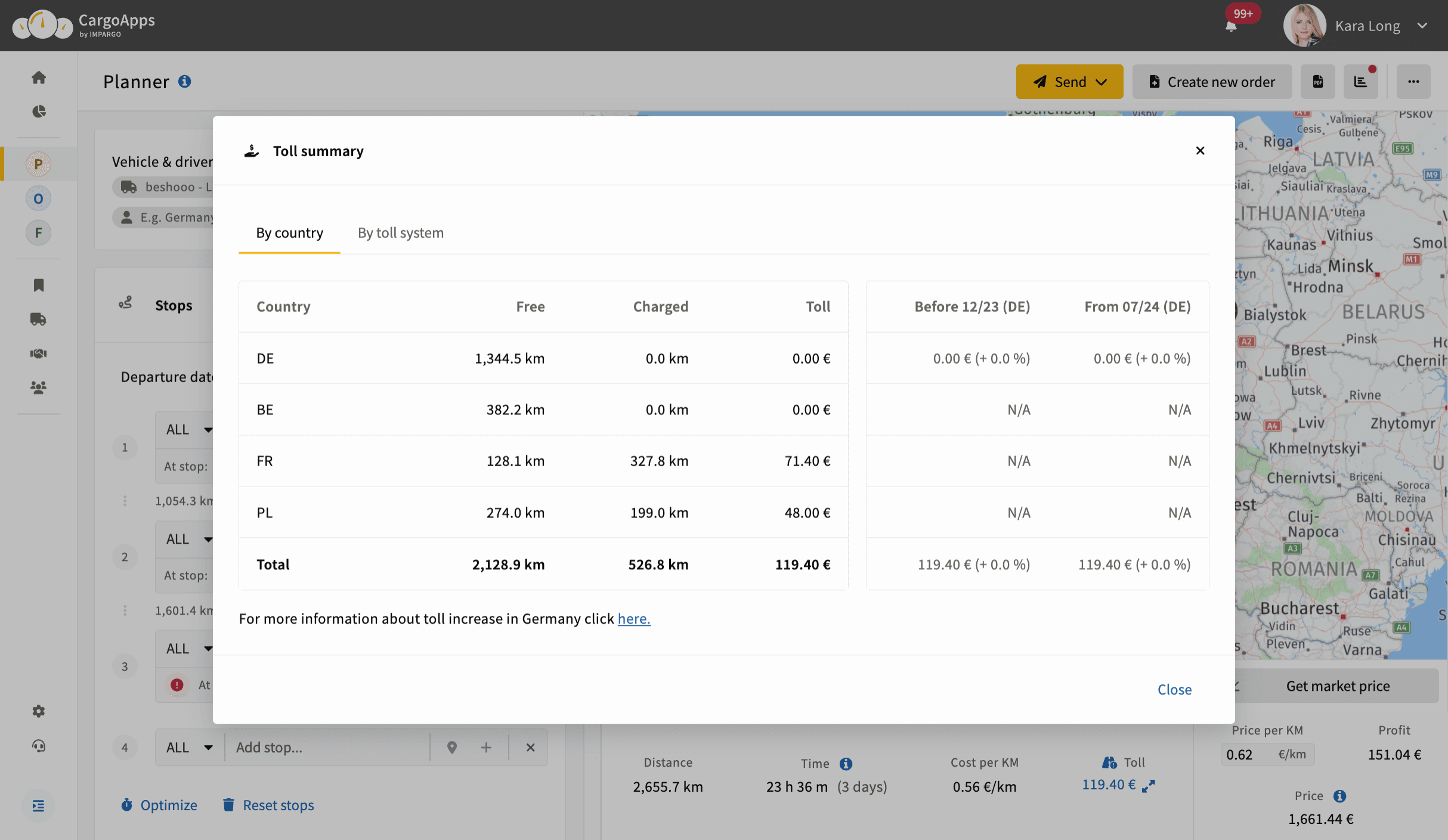From July 1, 2026, the Netherlands will introduce a new toll system for trucks — also known as vrachtwagenheffing. This toll is based on the distance driven and the emissions of the truck. It applies to heavy goods vehicles (HGVs) from both the Netherlands and abroad.
This guide explains how the toll system works, who must pay, what it costs, and how to prepare.
Key Dates for Truck Toll Implementation
| Milestone | Date |
|---|---|
| Subsidies for emission-free trucks available | March 26, 2024 |
| €70M subsidies budget allocated | 2024 |
| €100M subsidies budget allocated | 2025 |
| Toll system start date | July 1, 2026 |
| Eurovignette discontinued in NL | July 1, 2026 |
1. What Is the New Truck Toll in the Netherlands?
The truck toll in the Netherlands applies to all trucks over 3.5 tonnes, both domestic and international. It is officially called vrachtwagenheffing and will start on 1 July 2026.
Key notes:
- Also referred to as heavy goods vehicles (HGVs) CO₂ tax
- Applies to HGVs, categories N2 and N3
- Replaces the current Eurovignette for NL roads
The toll is calculated per kilometre, depending on your truck's weight and emission level.
2. Why Is the Vrachtwagenheffing Being Introduced?
The toll has two main goals:
- Make truck transport pay-per-use on Dutch roads
- Support sustainability by encouraging low- and zero-emission trucks
Part of the revenue will fund green transport programs, including subsidies for electric trucks and hydrogen-powered vehicles.
3. Where Does the Toll Apply?
The truck toll will apply to:
- Almost all Dutch motorways
- A selection of important provincial and municipal roads
This prevents toll avoidance by using smaller roads.
4. Who Must Pay the Toll?
You must pay the toll if:
- Your truck is over 3,500 kg (gross weight)
- You operate in the Netherlands, even if your truck is foreign-registered
Exemptions apply to:
- Zero-emission vehicles up to 4,250 kg
- Emergency and military vehicles
- Historic trucks (40+ years old)
5. What Will the Toll Cost?
Toll rates are divided into two CO₂ emission categories and further split by Euro class and weight class. Below are 2025 price tables for the two categories.
The toll depends on:
- Vehicle weight
- Euro emission class (0–6+)
- CO₂ efficiency category (1–5)
CO₂ Emission Class 1 Full Costs Table (EUR/km)
CO₂ Emission Classes 2–5 Full Costs Table (EUR/km)

Automated toll calculation is just one of the smart logistics tools included in IMPARGO’s all-in-one Transport Management Platform (TMP®). It’s designed to help carriers, shippers, and freight forwarders simplify operations, cut costs, and stay compliant.
Whether you're routing trucks across Europe or managing domestic fleets, IMPARGO TMP® gives you full control — from planning and tolls to driver tracking and cost calculation — all in one streamlined cloud solution.
Get a personalized walkthrough tailored to your logistics workflows. Our TMS experts will help you explore how TMP® can fit seamlessly into your day-to-day operations.
No setup cost.
→ Book your free demo with a TMS expert
6. How to Pay the Toll
To pay the toll:
- You must sign a contract with an official toll service provider
- You must install an On-Board Unit (OBU) in your truck
The OBU is a GPS-connected device (also called a tolkastje) that tracks kilometres driven on toll roads. It must always be switched on, even when you’re not on tolled roads.
Providers include:
- EETS providers (EU-wide coverage)
- Nedlinq (Netherlands only)
7. How the System Works and Is Enforced
The OBU uses satellite GPS to track your journey. Your provider calculates the toll and sends the data to the Dutch government.
Enforcement methods:
- Road cameras and gantries
- Mobile control units
- On-the-spot inspections
You may be fined if:
- You don’t have a valid contract
- Your OBU is missing, off, or faulty
- The OBU is registered to another truck
8. What Happens to Existing Charges?
Eurovignette
- Ends for the Netherlands on July 1, 2026
- Still required for Luxembourg and Sweden
MRB (Motor Vehicle Tax)
- Removed for trucks ≤12t (N2)
- Lowered for trucks >12t (N3)
9. Available Subsidies & Sustainability Support
Much of the toll revenue will fund greener transport, including:
- Subsidies for electric trucks
- Support for hydrogen fuel stations
- CO₂ scans and planning tools for fleet efficiency
Key programs:
- AanZET subsidy for zero-emission trucks
- RVO support for logistics companies
Funding amounts:
- 2024: €70 million
- 2025: €100 million
- 2026+: From toll income
10. Tools to Help You Plan and Calculate
Before driving, you can check costs using:
- Truck toll calculator for Europe and Netherlands
- HGV route planner tools
- Full Transport Management Platform (for professional businesses)
These help you estimate the cost per kilometre, depending on your route and truck type.
11. Frequently Asked Questions
What if my OBU is broken?
Contact your provider immediately. You may collect a new unit from a service point.
Do I need the OBU if I’m not driving on toll roads?
Yes, the OBU must always be on when the truck is in use.
Can I get a fine for wrong usage of the truck OBU?
Yes. Fines apply if the OBU is inactive, broken, or registered to the wrong vehicle.
Is the Dutch toll system GDPR-compliant?
Yes. Only necessary trip data is recorded and shared.
Do foreign trucks need to pay the toll in the Netherlands?
Yes. The toll applies to all trucks using Dutch roads.

